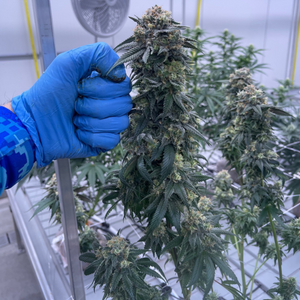Crop Steering for Generative Growth
Crop steering is a horticultural methodology that manipulates the indoor environment — irrigation, climate, and lighting — to produce targeted outcomes. Cannabis cultivators use this approach to strategically steer cannabis plants through vegetative and generative growth phases. The end goal is a greater final yield and a better phytochemical profile.
Following our recent review of crop steering for vegetative growth, we will now examine the specific cues required for generative development. Generative growth is geared towards reproduction: Plants produce bud sites and, later, flower.
 What are some of these environmental adjustments that you’ll need to make to transition your cannabis plants into generative growth?
What are some of these environmental adjustments that you’ll need to make to transition your cannabis plants into generative growth?
What is Generative Crop Steering?
Generative crop steering involves applying specific environmental cues to trigger the plants into flower development. During the generative phase, flowers limit the energy sent into roots, stems, and leaves and instead send energy into reproduction.
Most environmental cues during this period are slightly stressful, mirroring the end-of-summer seasonal changes that would naturally occur. Think harsher light, lower water content, and longer dry backs.
Many growers apply generative cues to reduce or stop stretching, which occurs near the end of vegging. But, as soon as they have achieved this goal, frequently growers will flip back into vegetative for a period of bulking.
You read that right. The terms “vegetative” and “generative” in the crop steering world aren’t just new terms for the traditional veg and flower phases.
Growers often flip back and forth between vegetative and generative to produce a more balanced plant. With the right vegetative cues, it’s possible to bulk out previously set flowers for a set period before finishing off with generative adjustments.
Cannabis Steering Cues for Generative Growth
Crop steering practices control three primary grow room inputs: irrigation, climate, and lighting. When and how you apply these different environmental cues determines your plants’ response.
The following is a quick reference for the fundamental steering practices that stimulate generative development in cannabis plants.
Irrigation Cues for Generative Growth
During generative periods, ensure irrigation begins between two to four hours after sunrise (lights on) and stops three to four hours before sunset (lights off). Remember the golden rule: Always allow your plants to begin to transpire before kickstarting irrigation for the day.
Another critical cue is the substrate water content. Again, you would have kept this quite high throughout vegetative, likely flooding every 30 minutes. Now, slow this down for the generative and increase the dry back.
Finally, aim for higher electrical conductivity (EC) in the substrate — between 2 to 2.5 for generative and 1.5 to 2 pre-harvest.
Climatic Cues for Generative Growth
To encourage reproductive growth, push for a higher vapor pressure deficit (VPD). That means the air still has a lot of room to hold more moisture, and plants are allowed to transpire at higher rates. Aim for a range of 5 to 7 grams/m3 of air.
Another climatic condition to consider is increasing the air exchange rate of your ventilation system. This will help reduce the risk of pathogens like bud rot and powdery mildew by keeping air moving throughout the system. Although less of a cue than a risk management tactic, it’s still part of the broader climate scope.
Lighting Cues for Generative Growth
Any cultivator with experience growing indoors will be familiar with the primary lighting cue for generative: reducing the lights on photoperiod.
Transitioning cannabis plants from an 18-hour lights-on schedule (used throughout vegetative) into a 12-hour lights-on period is one of the key cues to tell plants to switch into bud development.
A secondary cue is to increase light intensity through GROWHub integrated strain dimming controls. Higher intensity light mimics the natural climate nearing the end of summer.
A related cue that ties into climate conditions is differences in grow room temperatures from day to night. To convince plants it’s time to focus on generative growth, you need a bigger drop in temperature from day to night than you had in vegetative.
Scalable Crop Steering with Precision Zone Control
What if you could take crop steering to the next level? Today’s cultivators rely on irrigation and climate cues to push plants between vegetative and generative. For most, lighting has remained a secondary consideration because current technologies failed to deliver the required responsiveness.
But what if a lighting solution integrated information from localized sensors to respond in real-time to environmental conditions?
TSRgrow’s advanced LED lighting, remote power, data, and GROWHub environment technologies finally allow growers to dial in the lighting, precisely to the strain being grown, with unlimited zones capability. Every bench gets hyper-responsive lighting to revolutionize what's possible with crop steering in cannabis.
Are you ready to take your crop steering to the next level? TSRgrow advanced LED lighting solutions are helping cultivators succeed with their cultivation goals. Contact a growing specialist today for a complimentary consultation.
